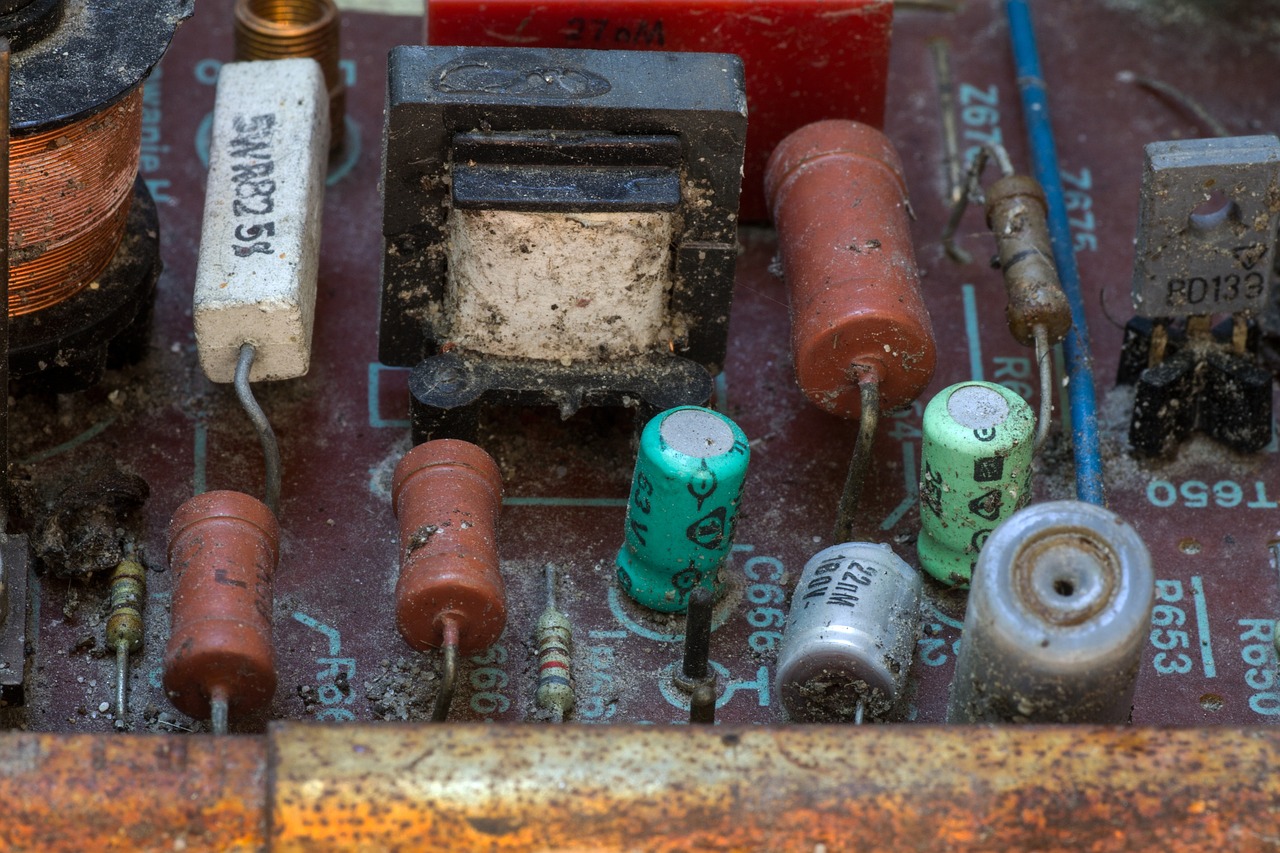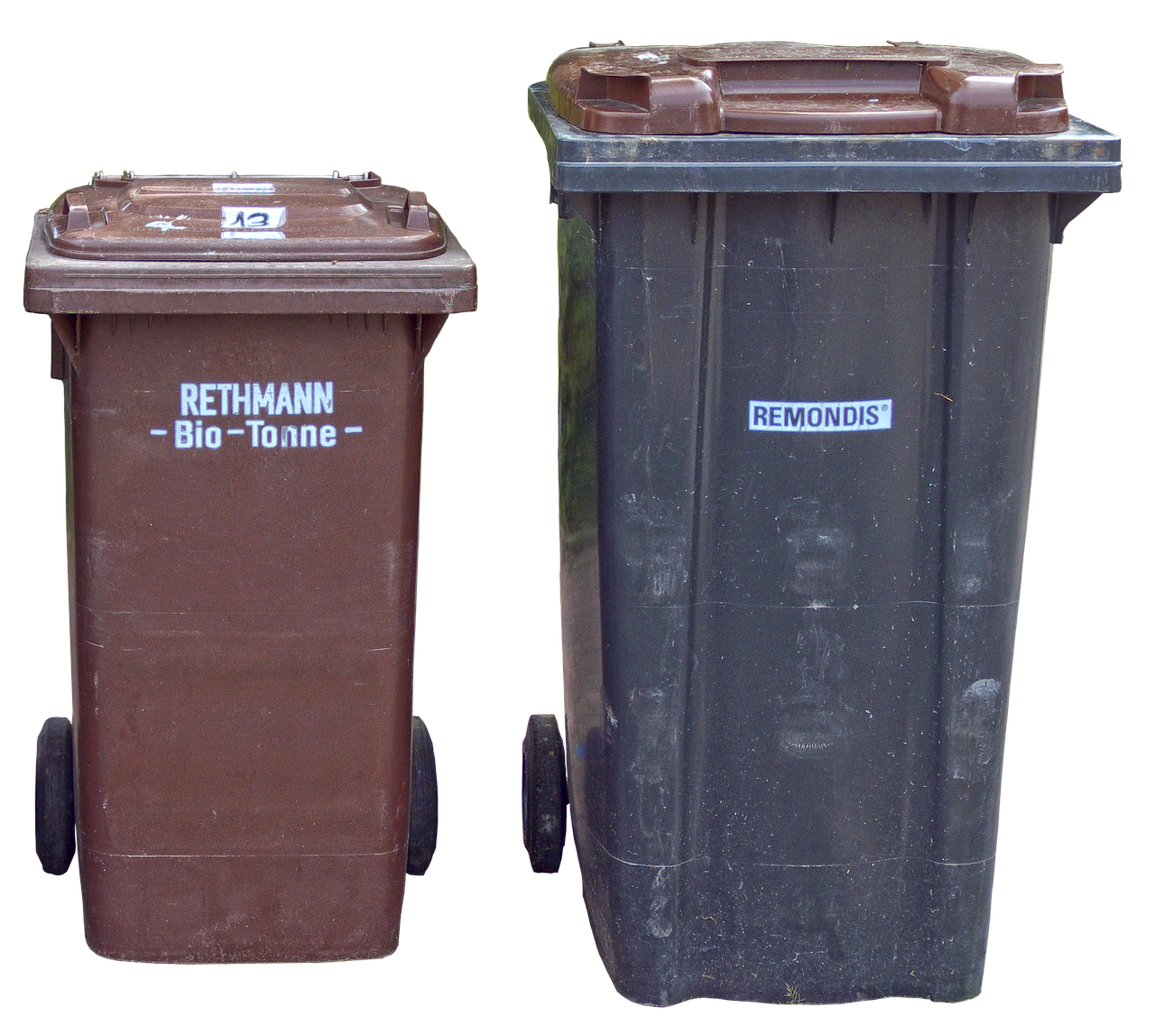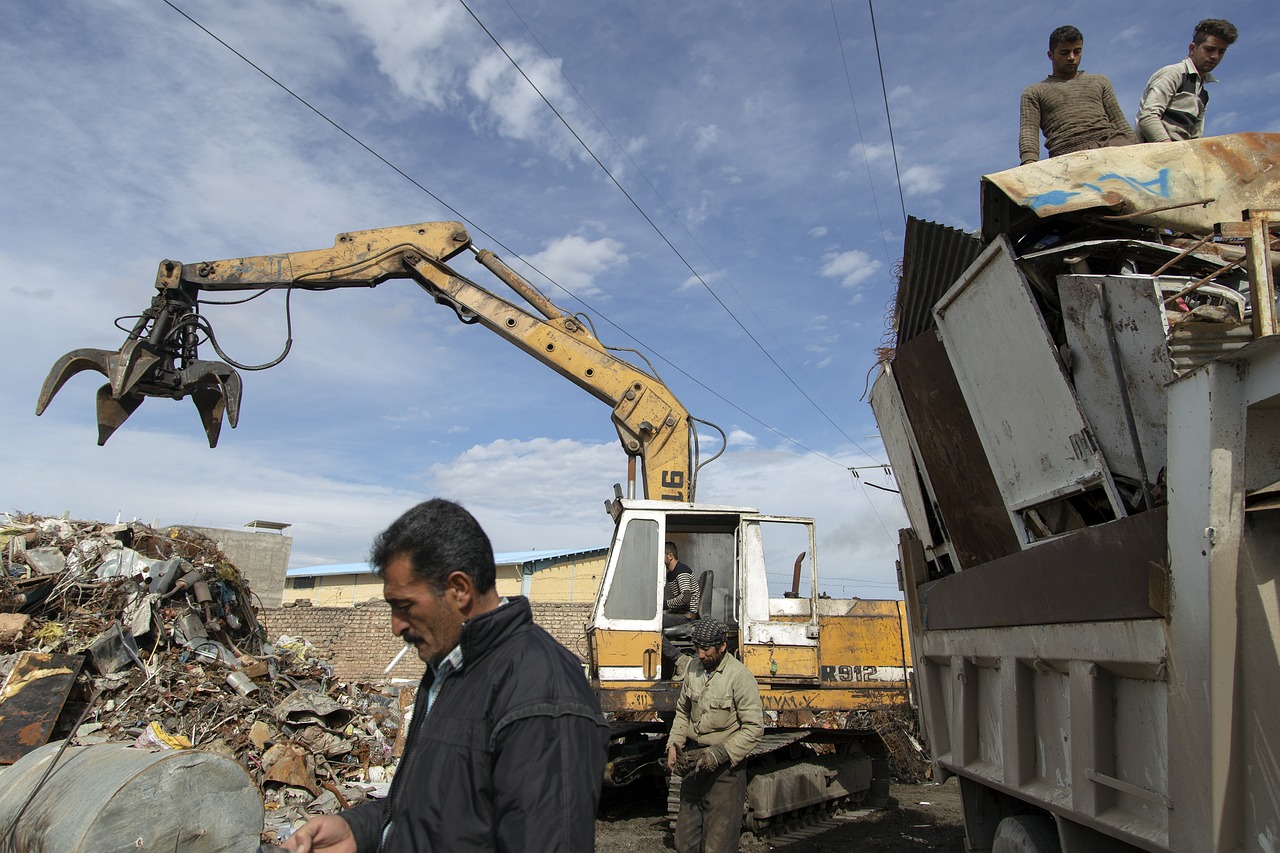How Municipal Solid Waste Can be Transformed into Energy
Municipal solid waste (MSW) is often seen as a burden, piling up in landfills and contributing to environmental degradation. However, what if I told you that this very waste could be transformed into a valuable resource? The process of converting MSW into energy is not just a dream; it's a reality that many communities are exploring to address waste management issues while generating sustainable energy. Imagine turning your trash into treasure! This article delves into innovative methods for converting municipal solid waste into energy, highlighting various technologies, benefits, challenges, and future implications of waste-to-energy initiatives.
Municipal solid waste (MSW) encompasses everyday items discarded by the public. This includes everything from food scraps and paper products to plastics and metals. Understanding its composition and sources is crucial for effective energy transformation strategies and sustainable waste management practices. Did you know that a significant portion of MSW is organic waste? In fact, organic materials can account for up to 30% of total waste in many municipalities. By recognizing the makeup of our waste, we can tailor energy conversion processes to maximize efficiency and minimize environmental impact.
Various technologies exist for converting MSW into energy, including incineration, anaerobic digestion, and gasification. Each method has unique processes, efficiencies, and environmental impacts that influence its suitability for different contexts. For instance, incineration is often favored in urban areas where space for landfills is limited, while anaerobic digestion is particularly effective for organic waste. Understanding these technologies helps communities choose the best approach for their specific waste profiles and energy needs.
Incineration involves burning waste at high temperatures to produce energy. This method significantly reduces waste volume, leading to less material being sent to landfills. However, it raises concerns about emissions and air quality, necessitating advanced filtration systems to mitigate environmental impact. The process generates heat, which can be converted into electricity or used for district heating. In a world where energy demand is ever-increasing, incineration can play a crucial role in energy recovery.
Incineration offers several advantages, including:
- Energy Recovery: The heat generated can be harnessed to produce electricity.
- Volume Reduction: Incineration can reduce waste volume by up to 90%, freeing up valuable land space.
- Lower Landfill Usage: By diverting waste from landfills, incineration helps mitigate soil and groundwater contamination.
These benefits make incineration a viable option for urban waste management, especially in densely populated areas.
Despite its benefits, incineration poses challenges such as:
- Toxic Emissions: The burning process can release harmful pollutants if not properly managed.
- High Initial Costs: Setting up incineration facilities requires significant investment.
- Public Opposition: Communities may resist incineration due to environmental concerns.
Addressing these concerns is essential for broader acceptance and implementation of incineration facilities.
Anaerobic digestion is a biological process that breaks down organic waste in the absence of oxygen, producing biogas. This renewable energy source can be used for heating, electricity, or as vehicle fuel. It's like a natural recycling system, where microorganisms do the heavy lifting. The resulting biogas can be harnessed to power homes, businesses, or even vehicles, making it a versatile energy solution. Moreover, the leftover material, known as digestate, can be used as a nutrient-rich fertilizer, closing the loop in organic waste management.
Gasification converts organic materials into syngas through high-temperature processes. This technology offers flexibility in feedstock and can produce cleaner energy compared to traditional combustion methods, making it an appealing alternative. Unlike incineration, gasification allows for the recovery of valuable byproducts, which can be utilized in various industrial applications. As we strive for a sustainable future, gasification stands out as a promising method for transforming waste into energy.
Gasification reduces greenhouse gas emissions and minimizes waste sent to landfills. By converting waste into valuable energy, it supports sustainable development and helps mitigate climate change impacts. The cleaner syngas produced can be used for electricity generation or as a feedstock for chemicals, showcasing its potential beyond just energy production.
Despite its potential, gasification faces challenges such as:
- High Costs: Initial investments for gasification plants can be substantial.
- Technical Complexities: The technology requires skilled operation and maintenance.
- Specific Waste Types: Not all waste materials can be effectively processed through gasification.
Overcoming these barriers is vital for its widespread adoption and effectiveness in waste management. As we look to the future, the integration of these technologies could revolutionize how we manage municipal solid waste and generate energy.
Q1: What is municipal solid waste?
A1: Municipal solid waste (MSW) includes everyday items discarded by the public, such as food scraps, paper, plastics, and metals.
Q2: How does incineration work?
A2: Incineration involves burning waste at high temperatures to produce energy, significantly reducing waste volume.
Q3: What are the benefits of anaerobic digestion?
A3: Anaerobic digestion produces biogas that can be used for heating and electricity, and the leftover digestate can be used as fertilizer.
Q4: What challenges does gasification face?
A4: Gasification faces challenges such as high costs, technical complexities, and the need for specific waste types.

Understanding Municipal Solid Waste
Municipal solid waste (MSW) is a term that encapsulates the myriad of everyday items we casually toss away. From the remnants of our lunch to the packaging of our latest online shopping spree, MSW represents a significant portion of what we generate as a society. Understanding the composition and sources of this waste is crucial for developing effective strategies to convert it into energy, thereby promoting sustainable waste management practices.
The composition of MSW can be quite varied, typically consisting of organic materials, plastics, metals, paper, and glass. Each of these components plays a unique role in the waste-to-energy process, influencing the methods used for conversion. For instance, organic waste, which includes food scraps and yard waste, can be effectively transformed through processes like anaerobic digestion. On the other hand, plastics and metals may require different approaches, such as incineration or gasification, to harness their energy potential.
To further illustrate the composition of municipal solid waste, consider the following table, which breaks down the typical percentages of various materials found in MSW:
| Material Type | Percentage of Total MSW |
|---|---|
| Organic Waste | 28% |
| Plastics | 12% |
| Metals | 9% |
| Paper and Cardboard | 25% |
| Glass | 7% |
| Other | 19% |
As you can see, organic waste constitutes a significant portion of municipal solid waste. This is where the opportunity lies for energy recovery. By understanding the sources of MSW, including residential, commercial, and industrial contributions, we can tailor our waste management strategies to maximize energy recovery while minimizing environmental impact.
Moreover, the effective management of municipal solid waste not only contributes to energy production but also plays a vital role in reducing landfill usage. With landfills reaching capacity in many urban areas, finding innovative ways to recycle and convert waste is more important than ever. This not only helps in conserving natural resources but also in reducing greenhouse gas emissions, which are a significant concern in today's climate crisis.
So, next time you throw something away, think about the journey that item could take. Could it be transformed into energy? Could it help power your city? The answer lies in how we understand and manage our municipal solid waste. By embracing new technologies and approaches, we can turn our waste challenges into energy solutions, paving the way for a more sustainable future.

Technologies for Waste-to-Energy Conversion
When we talk about converting municipal solid waste (MSW) into energy, we're diving into a world of innovative technologies that can turn our trash into treasure. The methods available today vary in their processes, efficiencies, and environmental impacts, making it essential to understand each option. The three most prominent technologies include incineration, anaerobic digestion, and gasification. Each of these methods has its unique strengths and weaknesses, which can significantly influence their suitability for different communities and waste management strategies.
Starting with incineration, this method involves burning waste at extremely high temperatures, converting it into energy while dramatically reducing its volume. Imagine reducing a mountain of garbage to a small pile of ash! However, incineration isn't without its drawbacks. It raises concerns about harmful emissions. Therefore, advanced filtration systems are crucial to minimize the environmental impact. Despite these challenges, incineration remains a popular choice in urban areas where space is limited and energy recovery is critical.
Then we have anaerobic digestion, a more biological approach to waste management. This process breaks down organic waste in the absence of oxygen, producing biogas, which can be harnessed as a renewable energy source. Think of it as letting nature do the work for you! The biogas produced can be used for heating, generating electricity, or even powering vehicles. This method not only reduces waste but also contributes to a circular economy by turning food scraps and yard waste into valuable energy.
Lastly, let’s talk about gasification. This technology takes organic materials and converts them into syngas through high-temperature processes. What makes gasification particularly appealing is its flexibility; it can handle various feedstocks, making it a versatile option for different waste types. The syngas produced can be further processed into fuels or electricity, providing a cleaner energy alternative compared to traditional combustion methods. However, like any technology, gasification comes with its own set of challenges, including high costs and technical complexities that need addressing for wider adoption.
To summarize, here’s a quick comparison of these three technologies:
| Technology | Process | Energy Output | Environmental Impact |
|---|---|---|---|
| Incineration | Burning waste at high temperatures | Electricity and heat | Potential emissions, requires filtration |
| Anaerobic Digestion | Biological breakdown without oxygen | Biogas for heating and electricity | Lower emissions, sustainable |
| Gasification | Converting waste into syngas at high temperatures | Fuels and electricity | Cleaner energy, fewer emissions |
Each of these technologies plays a vital role in the quest to transform waste into energy. By understanding their unique processes and impacts, we can better assess which methods align with our sustainability goals and energy needs. As we continue to innovate and improve these technologies, the potential for waste-to-energy conversion becomes more promising, paving the way for a cleaner, greener future.
- What is municipal solid waste? Municipal solid waste refers to everyday items discarded by the public, including food scraps, packaging, and household items.
- How does incineration work? Incineration involves burning waste at high temperatures to generate energy while reducing its volume significantly.
- What are the environmental impacts of anaerobic digestion? Anaerobic digestion produces biogas, which is a renewable energy source, and reduces greenhouse gas emissions compared to traditional waste disposal methods.
- Is gasification a sustainable technology? Yes, gasification converts waste into cleaner energy and minimizes landfill use, supporting sustainable development.

Incineration Processes
Incineration is a waste treatment process that involves the combustion of organic substances contained in waste materials. This method is often viewed as a double-edged sword; on one hand, it significantly reduces the volume of waste—sometimes by as much as 90%—and on the other, it raises concerns about environmental impact, particularly emissions. The basic principle of incineration is straightforward: waste is burned at high temperatures, transforming it into ash, flue gas, and heat. The heat generated during this process can be harnessed to produce electricity or provide heating for residential and industrial applications.
During incineration, the waste is first fed into a furnace where it is subjected to a controlled combustion process. The temperatures typically range between 850 to 1,200 degrees Celsius, ensuring that organic materials are effectively broken down. However, the combustion of waste can also produce harmful byproducts, including dioxins, furans, and particulate matter. To combat these issues, modern incineration facilities are equipped with advanced filtration systems designed to capture and neutralize these toxic emissions before they are released into the atmosphere.
It's essential to understand that not all waste is suitable for incineration. Materials like metals, glass, and certain plastics can complicate the combustion process. Therefore, effective sorting and preprocessing of waste are crucial steps before incineration can take place. Some facilities even employ a pre-treatment phase where waste is shredded, dried, or otherwise modified to enhance its combustibility.
Despite its effectiveness, the incineration process is not without controversy. Critics argue that it can lead to air pollution and may discourage recycling efforts. In response, many regions are now implementing strict regulations and monitoring systems to ensure that emissions remain within acceptable limits. The balance between waste management and environmental protection is delicate, and ongoing advancements in technology are crucial to making incineration a more sustainable option.
In summary, while incineration processes offer a viable solution for waste management, they require careful consideration of environmental impacts and operational efficiencies. As cities continue to grapple with the growing challenge of municipal solid waste, incineration may play a pivotal role in transforming waste into energy, provided that it is implemented responsibly and with the proper safeguards in place.
- What types of waste can be incinerated? Generally, organic waste is suitable for incineration, while metals, glass, and certain plastics should be avoided.
- How does incineration affect the environment? While it reduces waste volume, incineration can produce harmful emissions, which is why advanced filtration systems are utilized.
- Is incineration a sustainable waste management option? Yes, but it requires strict regulations and technology to minimize environmental impact.

Advantages of Incineration
When it comes to managing municipal solid waste (MSW), one of the most talked-about methods is incineration. This process involves burning waste at high temperatures, resulting in a significant reduction in volume. In fact, incineration can reduce the waste volume by up to 90%! Imagine taking a mountain of trash and turning it into a small pile of ash. This drastic reduction not only helps in managing landfills but also creates a sustainable energy source. But wait, there’s more! Let’s dive into some of the key advantages of this technology.
First and foremost, energy recovery is a major benefit. Incineration doesn’t just destroy waste; it also generates energy in the form of electricity and heat. This energy can be harnessed to power homes and businesses, making incineration a dual-purpose solution. In many urban areas, the energy produced can be enough to supply thousands of households with electricity, contributing to the local grid and reducing reliance on fossil fuels.
Additionally, the reduced need for landfill space is a game-changer. With landfills reaching capacity in many regions, incineration provides a viable alternative. By managing waste through incineration, cities can extend the lifespan of existing landfills and delay the need to create new ones. This not only saves space but also minimizes the environmental impact associated with landfill sites, such as leachate and methane emissions.
Moreover, incineration facilities are designed with advanced technologies that include filtration systems to capture harmful emissions. This means that while waste is being burned, the process can be controlled to minimize pollutants released into the atmosphere. In fact, modern incinerators can achieve emission levels that are significantly lower than traditional waste disposal methods. This is a crucial aspect, as the public often expresses concern over air quality and health impacts.
Lastly, let’s not forget about the economic aspect. Incineration can create jobs, from facility operation to maintenance and energy production. This not only boosts the local economy but also fosters innovation in waste management technologies. In essence, incineration can pave the way for a more sustainable future, where waste is viewed not just as refuse but as a valuable resource.
In summary, the advantages of incineration include:
- Energy Recovery: Producing electricity and heat from waste.
- Volume Reduction: Decreasing waste size by up to 90%.
- Less Landfill Dependency: Extending the life of landfills.
- Advanced Filtration: Minimizing harmful emissions.
- Economic Opportunities: Creating jobs and boosting local economies.
In conclusion, incineration is not without its challenges, but the advantages it offers make it a compelling option for modern waste management. With the right technology and public support, incineration can transform how we think about waste, turning it from a burden into a resource.
Q: Is incineration harmful to the environment?
A: While there are concerns about emissions, modern incineration facilities are equipped with advanced filtration systems that significantly reduce harmful pollutants. When managed correctly, the environmental impact can be minimized.
Q: What types of waste can be incinerated?
A: Generally, most municipal solid waste can be incinerated, but hazardous materials and certain plastics may require special handling.
Q: How does incineration compare to landfill disposal?
A: Incineration reduces waste volume significantly and generates energy, while landfilling simply stores waste, which can lead to environmental issues over time.
Q: Can incineration facilities be economically viable?
A: Yes, incineration can be economically beneficial by generating energy, reducing landfill costs, and creating jobs in the community.

Disadvantages of Incineration
While incineration presents some appealing advantages in managing municipal solid waste (MSW), it is not without its disadvantages that warrant careful consideration. First and foremost, one of the most significant concerns is the potential for toxic emissions. When waste is burned at high temperatures, it can release harmful pollutants such as dioxins, furans, and heavy metals into the atmosphere. These substances can have detrimental effects on both human health and the environment, raising alarms among communities living near incineration facilities.
Furthermore, the initial setup costs for incineration plants can be quite high. Constructing a state-of-the-art facility that meets stringent environmental regulations requires substantial investment. This financial burden can deter municipalities from pursuing incineration as a viable waste management strategy, especially when budgets are tight.
Public opposition is another hurdle that incineration must overcome. Many communities are understandably concerned about the potential health risks associated with living near an incinerator. The fear of air pollution and its long-term effects can lead to strong community resistance, making it challenging for local governments to implement these facilities. In some cases, public sentiment can be so strong that it results in lengthy legal battles or outright rejection of proposed incineration projects.
Additionally, while incineration reduces the volume of waste significantly—by as much as 90%—it does not eliminate the need for landfills. The residual ash produced after incineration must still be disposed of, and this can lead to further environmental concerns if not managed properly. Moreover, the ash may contain hazardous materials, necessitating careful handling and disposal to prevent soil and water contamination.
In summary, while incineration can be a powerful tool in the waste management arsenal, its disadvantages—ranging from environmental concerns to economic challenges—must be addressed to gain broader acceptance. Balancing the benefits with the potential drawbacks is crucial for communities considering this method of waste-to-energy conversion.
- What are the main pollutants released by incineration?
Incineration can release dioxins, furans, heavy metals, and particulate matter, which can pose health risks. - How does incineration compare to landfilling?
Incineration reduces waste volume significantly but produces ash that still needs to be landfilled, while landfilling does not generate energy. - Are there any technologies to mitigate emissions from incineration?
Yes, advanced filtration systems and scrubbers can help reduce harmful emissions from incineration plants. - What is the cost of building an incineration facility?
The costs can vary widely, typically ranging from tens of millions to hundreds of millions of dollars, depending on the technology and regulations.

Anaerobic Digestion Explained
Anaerobic digestion is a fascinating and innovative biological process that transforms organic waste into valuable energy. Imagine a world where food scraps, yard waste, and other biodegradable materials are not just thrown away but are instead converted into a renewable energy source. This process occurs in the absence of oxygen, where microorganisms break down organic matter, producing biogas as a byproduct. Biogas is primarily composed of methane and carbon dioxide, and it can be harnessed to generate electricity, heat, or even fuel for vehicles. Isn't it amazing how nature can turn waste into something so useful?
The anaerobic digestion process typically involves several stages: hydrolysis, acidogenesis, acetogenesis, and methanogenesis. Each of these stages plays a critical role in breaking down complex organic materials into simpler compounds. For instance, during hydrolysis, large organic molecules such as carbohydrates, proteins, and fats are broken down into smaller, soluble molecules. This is followed by acidogenesis, where these smaller molecules are converted into volatile fatty acids and other compounds. Next is acetogenesis, where these acids are further transformed into acetic acid, hydrogen, and carbon dioxide. Finally, in the methanogenesis stage, methanogenic microorganisms convert the acetic acid and hydrogen into methane, resulting in the production of biogas.
One of the standout features of anaerobic digestion is its ability to reduce the volume of waste significantly. By breaking down organic materials, it can reduce the overall waste mass by up to 90%. This not only lessens the burden on landfills but also mitigates greenhouse gas emissions that would otherwise occur from decomposing organic waste in anaerobic landfill conditions. Additionally, the digestate, which is the solid material left after digestion, can be used as a nutrient-rich fertilizer, promoting sustainable agriculture.
However, it's essential to recognize that while anaerobic digestion has numerous advantages, it also comes with its own set of challenges. The process requires careful management of temperature, pH, and the composition of the feedstock to ensure optimal microbial activity. Moreover, the initial setup costs for anaerobic digestion facilities can be relatively high, which may deter some municipalities or businesses from investing in this technology. Despite these challenges, the benefits of anaerobic digestion, including renewable energy generation and waste reduction, make it a compelling option for sustainable waste management.
| Stage of Anaerobic Digestion | Description |
|---|---|
| Hydrolysis | Breakdown of complex organic molecules into simpler compounds. |
| Acidogenesis | Conversion of soluble compounds into volatile fatty acids. |
| Acetogenesis | Transformation of fatty acids into acetic acid, hydrogen, and carbon dioxide. |
| Methanogenesis | Conversion of acetic acid and hydrogen into methane, producing biogas. |
In conclusion, anaerobic digestion stands as a beacon of hope in the quest for sustainable waste management and renewable energy. By harnessing the power of microorganisms, we can turn what would be waste into a resource, paving the way for a cleaner, greener future.
- What types of waste can be processed through anaerobic digestion? Organic waste such as food scraps, agricultural residues, and yard waste are ideal for anaerobic digestion.
- How is biogas used? Biogas can be used for generating electricity, heating, or as a vehicle fuel.
- Is anaerobic digestion environmentally friendly? Yes, it reduces waste volume, lowers greenhouse gas emissions, and produces renewable energy.
- What is digestate? Digestate is the nutrient-rich material left after the anaerobic digestion process, which can be used as fertilizer.

The Role of Gasification
Gasification is a cutting-edge technology that converts organic materials into synthesis gas, or syngas, through a high-temperature process with limited oxygen. This method stands out as a flexible and efficient alternative to traditional waste-to-energy techniques. Unlike incineration, which simply burns waste, gasification transforms it into a gas that can be further refined into various forms of energy, such as electricity, heat, or even fuels for vehicles. This process not only maximizes energy recovery but also minimizes the volume of waste that ends up in landfills, making it a vital player in the quest for sustainable waste management solutions.
One of the most compelling aspects of gasification is its ability to handle a diverse range of feedstocks. Whether it’s agricultural residues, municipal solid waste, or industrial by-products, gasification can adapt to different types of organic materials. This versatility is akin to a chef who can whip up a gourmet meal from whatever ingredients are available in the pantry. By optimizing the feedstock, gasification can produce cleaner energy with fewer emissions when compared to traditional combustion methods. This makes it an appealing option for communities looking to reduce their carbon footprint and transition to renewable energy sources.
The environmental benefits of gasification are profound. By reducing greenhouse gas emissions and minimizing the amount of waste sent to landfills, this technology supports the principles of sustainable development. It’s like turning trash into treasure, as it not only diverts waste from landfills but also creates valuable energy resources. Furthermore, the syngas produced can be used in various applications, including:
- Electricity generation
- Heating
- As a feedstock for producing chemicals and fuels
However, while the potential of gasification is immense, it’s not without its challenges. The initial capital investment can be quite high, and the technology itself can be complex, requiring specialized knowledge and skills to operate effectively. Additionally, gasification systems often demand specific types of waste to function optimally, which can limit their applicability in certain regions. Overcoming these hurdles is crucial for the widespread adoption of gasification as a mainstream waste management solution.
In summary, gasification represents a transformative approach to waste management and energy production. By converting waste into valuable energy while minimizing environmental impact, it holds the promise of a cleaner, more sustainable future. As communities and governments increasingly recognize the importance of innovative waste solutions, gasification is poised to play a pivotal role in the global transition towards renewable energy.
Here are some common questions regarding gasification and its role in waste management:
- What is gasification? Gasification is a process that converts organic materials into syngas through high-temperature treatment with limited oxygen.
- What types of waste can be used in gasification? A wide range of organic materials, including municipal solid waste, agricultural residues, and industrial by-products, can be processed.
- What are the environmental benefits of gasification? Gasification reduces greenhouse gas emissions, minimizes landfill waste, and produces cleaner energy compared to traditional combustion methods.
- What challenges does gasification face? High initial costs, technical complexities, and the need for specific waste types can hinder its implementation.

Environmental Benefits of Gasification
This article explores innovative methods for converting municipal solid waste into energy, highlighting various technologies, benefits, challenges, and future implications of waste-to-energy initiatives.
Municipal solid waste (MSW) encompasses everyday items discarded by the public. Understanding its composition and sources is crucial for effective energy transformation strategies and sustainable waste management practices.
Various technologies exist for converting MSW into energy, including incineration, anaerobic digestion, and gasification. Each method has unique processes, efficiencies, and environmental impacts that influence its suitability for different contexts.
Incineration involves burning waste at high temperatures to produce energy. This method reduces waste volume significantly but raises concerns about emissions and air quality, necessitating advanced filtration systems to mitigate environmental impact.
Incineration offers several advantages, including energy recovery, volume reduction, and lower landfill usage. It can generate electricity and heat, making it a viable option for urban waste management.
Despite its benefits, incineration poses challenges such as toxic emissions, high initial costs, and public opposition. Addressing these concerns is essential for broader acceptance and implementation of incineration facilities.
Anaerobic digestion is a biological process that breaks down organic waste in the absence of oxygen, producing biogas. This renewable energy source can be used for heating, electricity, or as vehicle fuel.
Gasification converts organic materials into syngas through high-temperature processes. This technology offers flexibility in feedstock and can produce cleaner energy compared to traditional combustion methods, making it an appealing alternative.
Gasification presents a multitude of environmental benefits that make it a compelling choice for waste management. One of the most significant advantages is its ability to significantly reduce greenhouse gas emissions compared to traditional waste disposal methods. By converting waste into syngas, gasification minimizes the release of harmful pollutants into the atmosphere.
Moreover, gasification helps in reducing the volume of waste that ends up in landfills. This is crucial as landfills are not only a source of methane—a potent greenhouse gas—but also take up valuable land resources. By diverting waste from landfills, gasification contributes to more sustainable land use and helps preserve natural habitats.
Another key environmental benefit is the production of cleaner energy. The syngas generated can be utilized for various applications, including electricity generation and as a substitute for fossil fuels. This transition to cleaner energy sources aids in combating climate change and promotes a shift towards a more sustainable energy future.
To illustrate the environmental advantages of gasification, consider the following table:
| Benefit | Description |
|---|---|
| Reduced Greenhouse Gas Emissions | Gasification emits fewer greenhouse gases compared to landfilling or incineration. |
| Less Waste in Landfills | Gasification diverts waste from landfills, reducing their size and environmental impact. |
| Cleaner Energy Production | Syngas can be used as a cleaner alternative to fossil fuels for energy generation. |
In summary, the environmental benefits of gasification are substantial. By reducing emissions, minimizing landfill waste, and producing cleaner energy, gasification not only addresses the pressing issue of waste management but also plays a vital role in the global effort to combat climate change.
- What is gasification? Gasification is a process that converts organic or fossil-based materials into carbon monoxide, hydrogen, and carbon dioxide at high temperatures.
- How does gasification compare to incineration? While both processes convert waste into energy, gasification produces syngas, which can be further processed into various fuels, whereas incineration primarily generates heat and electricity.
- Is gasification environmentally friendly? Yes, gasification offers several environmental benefits, including reduced greenhouse gas emissions and less waste sent to landfills.

Challenges in Gasification Implementation
Gasification is often hailed as a promising solution for converting municipal solid waste (MSW) into energy, but it certainly isn't without its challenges. One of the primary hurdles is the high initial cost associated with setting up gasification plants. These facilities require significant investment in advanced technology and infrastructure, which can be a deterrent for municipalities operating on tight budgets. In many cases, the financial burden can outweigh the perceived benefits, making it difficult to gain approval for new projects.
Another significant challenge is the technical complexity of the gasification process itself. Unlike simpler methods such as incineration, gasification involves intricate chemical reactions that require precise control over temperature and pressure. This complexity can lead to operational inefficiencies and increased maintenance costs. Moreover, the technology is still relatively new compared to traditional waste management methods, which can make it difficult to find experienced personnel to operate and maintain these systems.
The feedstock requirements also pose a challenge. Gasification works best with specific types of waste, particularly those that are rich in organic materials. However, the composition of MSW can vary significantly from one location to another. In many cases, the presence of non-organic materials can complicate the gasification process, leading to lower efficiencies and higher emissions. This variability can make it difficult to ensure a consistent supply of suitable feedstock, which is crucial for the economic viability of gasification facilities.
Moreover, there is often public skepticism surrounding waste-to-energy technologies, including gasification. Communities may fear potential environmental impacts, such as air pollution or the release of harmful byproducts. This skepticism can lead to public opposition, making it challenging for developers to secure the necessary permits and community support. Addressing these concerns through transparent communication and community engagement is essential for fostering acceptance and facilitating the implementation of gasification projects.
Lastly, regulatory hurdles can complicate the implementation of gasification technology. Different regions have varying regulations regarding waste management and emissions standards, which can create a patchwork of compliance challenges for operators. Navigating these regulations can be time-consuming and costly, further complicating the establishment of gasification facilities.
In summary, while gasification presents a promising avenue for transforming municipal solid waste into energy, it faces several challenges that must be addressed. From high initial costs and technical complexities to feedstock variability and public skepticism, overcoming these barriers is vital for the successful adoption and effectiveness of gasification as a waste management solution.
- What is gasification? Gasification is a process that converts organic or fossil-based materials into carbon monoxide, hydrogen, and carbon dioxide at high temperatures in a controlled environment.
- How does gasification differ from incineration? Unlike incineration, which burns waste to produce energy, gasification converts waste into a synthetic gas (syngas) that can be used to generate electricity or produce fuels.
- What types of waste can be used in gasification? Gasification is most effective with organic materials, such as food waste, agricultural residues, and certain types of plastics, but it can struggle with mixed waste streams.
- Are there environmental concerns associated with gasification? While gasification can reduce emissions compared to traditional incineration, it still requires careful management to prevent the release of pollutants.
- What are the economic benefits of gasification? Gasification can provide a renewable source of energy, reduce landfill usage, and create jobs in the green technology sector.
Frequently Asked Questions
- What is municipal solid waste (MSW)?
Municipal solid waste (MSW) refers to the everyday items that are discarded by the public, including household trash, food scraps, and packaging materials. Understanding what constitutes MSW is vital for developing effective strategies to convert it into energy and manage waste sustainably.
- How does incineration work in waste-to-energy conversion?
Incineration is a process where waste is burned at high temperatures to produce energy. This method significantly reduces the volume of waste while generating heat and electricity. However, it requires advanced filtration systems to minimize harmful emissions and protect air quality.
- What are the benefits of anaerobic digestion?
Anaerobic digestion is a biological process that breaks down organic waste without oxygen, producing biogas, which can be used for heating, electricity, or as fuel for vehicles. This process not only generates renewable energy but also helps reduce greenhouse gas emissions and manage organic waste efficiently.
- What makes gasification a preferable option for waste-to-energy conversion?
Gasification transforms organic materials into syngas through high-temperature processes, offering greater flexibility in the types of waste used. It produces cleaner energy compared to traditional combustion methods and can significantly reduce greenhouse gas emissions, making it an appealing alternative for sustainable energy production.
- What are the environmental concerns associated with incineration?
While incineration provides benefits like energy recovery and reduced landfill usage, it raises concerns about toxic emissions and air quality. The implementation of advanced filtration systems is essential to address these environmental impacts and ensure public safety.
- What challenges does gasification face in its implementation?
Gasification technology encounters several challenges, including high initial costs, technical complexities, and the requirement for specific types of waste. Overcoming these hurdles is crucial for the wider adoption and effectiveness of gasification in waste management strategies.



















